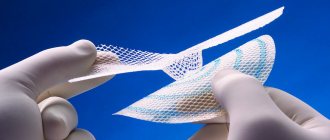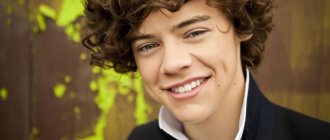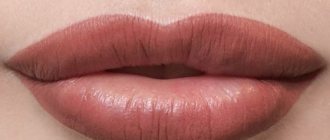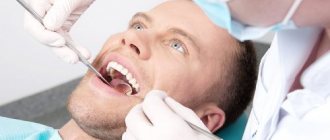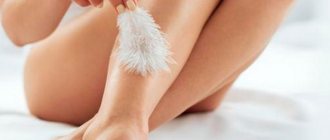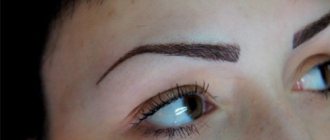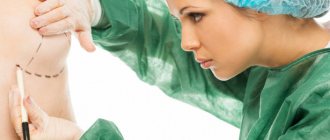home
/
Articles
/
Is it possible to remove the sutures yourself after surgery or is it necessary to do so without the help of a doctor?
In order for the wound to heal faster and more reliably after surgery, doctors put stitches on it. After some time after healing, they are removed by a specialist.
But there are situations when you cannot visit a doctor for a variety of reasons. Then patients have a question: is it possible to remove the stitches yourself? And if not, what is the price for removing stitches at home? You will find answers to these questions in the article.
Departure is paid separately - from 550 rubles
Request a call
Call:
+7 (499) 455-08-05
Is it possible to remove stitches yourself?
Of course, it is undesirable to remove stitches without a specialist: if you do it carelessly, you can cause an infection or open the wound ahead of schedule. But in some cases this is acceptable.
Things to consider:
- Do not remove the metal staples yourself, as you will not be able to do it anyway. Only a specialist can properly remove staples from the skin without harming the patient.
- You can remove stitches yourself only from small wounds; you should not remove threads after major operations yourself.
- Do not wet or wash the stitched areas with soap unless your doctor asks you to do so.
- This procedure is painless, so you have nothing to fear. However, if you feel pain, you should immediately report it to your doctor.
Materials used in osteoplasty
Osteoplasty uses both natural implants and artificial ones (allosynthetic materials). Natural ones include:
- Autogenous grafts are those that were taken from the same patient and transplanted into him. This material survives better than all other grafts, but you need to understand that another operation will be performed to remove tissue from the donor site.
- Allografts are material that has been taken from a donor's dead body for medical purposes. The material is carefully processed, disinfected, it perfectly restores bone tissue and is used in osteoplasty with great success.
- Xenografts are material taken from certain species of animals and corals. It is also carefully processed, sterilized and prepared for further use in invasive dental procedures associated with implantation.
Synthetic (alloplastic) implants are made on the basis of calcium phosphate or hydroxyapatite; they are also widely used by all specialists around the world.
How much does it cost to have stitches removed?
Removing sutures in Russia can cost 100-500 rubles. depending on regions. This procedure can be performed free of charge at a local clinic. But if you want to save time and nerves, go to a paid hospital.
The cost of the procedure depends not only on the region, but also on the complexity and location of the suture. The most expensive services are removal of sutures from the eyeball. Open areas (arms, legs, stomach) will be much cheaper.
Departure is paid separately - from 550 rubles
Request a call
Call:
+7 (499) 455-08-05
If you can’t go to the doctor, and you are afraid to carry out such a procedure yourself, you can use the service of suture removal at home. In Moscow, the price of the service may be slightly higher than in other regions. You don’t need to go anywhere - the specialist will come to you himself.
Lifestyle with sutures on the cervix, vagina and perineum
Cervical ruptures during labor and subsequent suturing of the ruptures do not impose additional restrictions on a woman’s activity, unlike perineal injuries.
If there are tears and seams in the perineal area, the young mother is instructed to strictly follow the following recommendations:
- During the first three weeks after childbirth, sitting positions should be avoided; this period is necessary for the complete fusion of the muscles of the perineum and pelvic floor. It is necessary to perform all usual activities (eating, performing hygiene procedures, personal care), as well as taking care of the newborn while standing or lying down. This also applies to traveling in a car - the back seat must be cleared so that a woman can sit there comfortably and safely. There are special positions to avoid stress on the perineum, “half-sided”, “leg to leg”, the doctor should explain this in detail. An excellent option for active mothers is an orthopedic circle; you can even sit on it while driving.
— Visit the toilet to have timely bowel movements and avoid constipation. The patient is allowed to sit on the toilet on the first day after birth. To facilitate the process of defecation, mother can use suppositories (rectal suppositories) with glycerin and other herbal remedies. These effective and at the same time safe drugs help intestinal function and smooth bowel movements. If necessary, the doctor may prescribe other medications, but it must be remembered that when breastfeeding, the baby also receives these substances.
- Do not lift heavy objects. It is highly not recommended to deal with objects and things weighing more than three kilograms, so if the child is large (4 kg or more), you should ask for help from family and friends until the mother’s condition is completely normalized.
Withdrawal deadlines and important factors
The sutures must be removed in time, when the wound has healed securely. If the procedure is performed early, the wound may open. If you remove the threads too late, inflammation will begin. Only a doctor can accurately determine whether or not the sutures can be removed.
The approximate timing for suture removal is given below:
- face/neck – 6-8 days;
- abdomen and chest – 10-14 days;
- after amputation – after 12 days;
- legs/arms – 9-11 days;
- after caesarean section – 7-11 days.
In the mouth they are removed after 3-6 days, and permanent sutures are placed on other mucous membranes.
When removing sutures, it is necessary to take into account a number of factors that will affect the entire process: the age and well-being of the patient, the characteristics of the disease and possible complications, the nature of the operation and the recovery characteristics of the body. For example, you are unlikely to be able to remove the sutures in your mouth without causing more harm.
The postoperative suture does not heal, it is red, inflamed: what to do?
One of a number of postoperative complications is inflammation of the suture. This process is accompanied by such phenomena as:
- swelling and redness in the suture area
- pain
- the presence of a seal under the seam that can be felt with your fingers
- increased temperature and blood pressure
- general weakness and muscle pain
The reasons for the appearance of the inflammatory process and further non-healing of the postoperative suture can be different:
- infection in a postoperative wound
- During the operation, the subcutaneous tissues were injured, resulting in the formation of hematomas
- suture material had increased tissue reactivity
- in overweight patients, wound drainage is insufficient
- low immunity of the patient being operated on
Often there is a combination of several of the listed factors that may arise:
- due to an error by the operating surgeon (instruments and materials were not processed sufficiently)
- due to patient non-compliance with postoperative requirements
- due to indirect infection, in which microorganisms are spread through the blood from another source of inflammation in the body
If you see redness of the suture, consult a doctor immediately
. In addition, the healing of a surgical suture largely depends on the individual characteristics of the body:
- weight – in obese people, the wound after surgery may heal more slowly
- age – tissue regeneration occurs faster at a young age
- nutrition – lack of proteins and vitamins slows down the recovery process
- chronic diseases – their presence prevents rapid healing
If you notice redness or inflammation of a postoperative suture, do not delay visiting a doctor. It is the specialist who must examine the wound and prescribe the correct treatment:
- remove stitches if necessary
- washes the wounds
- install drainage to drain purulent discharge
- will prescribe the necessary medications for external and internal use
Timely implementation of the necessary measures will prevent the likelihood of severe consequences (sepsis, gangrene). After medical procedures have been performed by your attending physician, to speed up the healing process at home, follow these recommendations:
- treat the suture and the area around it several times a day with the medications prescribed by the attending physician
- While showering, try not to touch the wound with a washcloth. When you get out of the bath, gently blot the seam with a bandage.
- change sterile dressings on time
- take multivitamins
- add extra protein to your diet
- do not lift heavy objects
Take vitamins to help the suture tighten better.
In order to minimize the risk of an inflammatory process, it is necessary to take preventive measures before surgery:
- boost your immunity
- sanitize your mouth
- identify the presence of infections in the body and take measures to get rid of them
- strictly observe hygiene rules after surgery
How to remove stitches after surgery
If you decide to remove the stitches yourself, please read the instructions below.
You will need:
- surgical or manicure scissors or scalpel;
- tweezers;
- antiseptic (hydrogen peroxide or alcohol);
- magnifying glass;
- sterile bandages;
- antibiotic ointment.
Everything you need must be at hand, so prepare thoroughly before starting the “operation”. Before work, tweezers and scissors/scalpel must be thoroughly disinfected in boiling water and treated with alcohol so as not to introduce infection into the wound. It is necessary to prepare a well-lit place; under no circumstances remove seams in the dark.
When all the tools and materials are prepared, you can start working:
- Rinse the stitched area thoroughly and then clean the wound with alcohol.
- Grab the first knot with tweezers and lift it slightly above the skin.
- Use scissors to cut the suture closer to the skin.
- Carefully pull the thread out of the skin (if bleeding appears, it means removal began before the wound has healed, so you need to consult a doctor).
- Remove the remaining seams in the same way. It is very important not to leave a single piece of thread in the leather.
- For greater safety, cover the wound with a sterile bandage.
Try not to pull the thread that was on the outside through the skin. This way you risk introducing an infection into the wound. To prevent this from happening, cut the suture as close to the skin as possible. Antibiotic ointment will be needed if the wound opens again. In this case, you need to re-stitch the stitches, and you can’t do it without a doctor.
Types of suture materials and suturing methods in modern medicine
An ideal suture material should have the following characteristics:
Be smooth and glide without causing additional damage. Be elastic, stretchable, without causing compression and tissue necrosis. Be durable and withstand loads. Tie securely in knots. Be biocompatible with body tissues, inert (do not cause tissue irritation), and have low allergenicity. The material should not swell from moisture. The period of destruction (biodegradation) of absorbable materials must coincide with the time of wound healing.
Different suture materials have different qualities. Some of them are advantages, others are disadvantages of the material. For example, smooth threads will be difficult to tighten into a strong knot, and the use of natural materials, so valued in other areas, is often associated with an increased risk of developing infection or allergies. Therefore, the search for the ideal material continues, and so far there are at least 30 thread options, the choice of which depends on specific needs.
Suture materials are divided into synthetic and natural, absorbable and non-absorbable. In addition, materials are manufactured consisting of one thread or several: monofilament or multifilament, twisted, braided, having various coatings.
Non-absorbable materials:
Natural – silk, cotton. Silk is a relatively durable material, thanks to its plasticity it ensures the reliability of knots. Silk is a conditionally non-absorbable material: over time, its strength decreases, and after about a year the material is absorbed. In addition, silk threads cause a pronounced immune response and can serve as a reservoir of infection in the wound. Cotton has low strength and is also capable of causing intense inflammatory reactions. Stainless steel threads are durable and produce minimal inflammatory reactions. Used in abdominal surgeries, when suturing the sternum and tendons. Synthetic non-absorbable materials have the best characteristics. They are more durable and their use causes minimal inflammation. Such threads are used for matching soft tissues, in cardiac and neurosurgery, and ophthalmology.
Absorbable materials:
Natural catgut. The disadvantages of the material include a pronounced tissue reaction, the risk of infection, insufficient strength, inconvenience in use, and the inability to predict the timing of resorption. Therefore, the material is currently practically not used. Synthetic absorbable materials. Made from degradable biopolymers. They are divided into mono and polyfilament. Much more reliable compared to catgut. They have certain resorption times, which differ for different materials, are quite durable, do not cause significant tissue reactions, and do not slip in the hands. Not used in neuro and cardiac surgery, ophthalmology, in situations where constant strength of sutures is required (for suturing tendons, coronary vessels).
Suture methods:
Ligature sutures - they are used to ligate vessels to ensure hemostasis. Primary sutures - allow you to compare the edges of the wound for healing by primary intention. Sutures can be continuous or interrupted. According to indications, immersed, purse-string and subcutaneous sutures can be applied. Secondary sutures - this method is used to strengthen primary sutures, to re-close a wound with a large number of granulations, in order to strengthen a wound that heals by secondary intention. Such sutures are called retention sutures and are used to unload the wound and reduce tissue tension. If the primary suture was applied in a continuous manner, interrupted sutures are used for the secondary suture, and vice versa.
Why is the wound sutured after pulling out the figure eight?
Wisdom teeth are very insidious and often lead to serious problems. Pulling it out most often resembles an operation. Since the roots of the unit go deep into the gum and can be ornate, tortuous, soft tissue is often excised to extract them. After all solid debris has been removed from the depths of the tissue, the wound is sutured. This is done in order to:
- prevent bleeding;
- protect the blood clot formed in the wound from injury;
- protect the operated area from the accumulation of food debris;
- minimize the risk of damage to the operating area;
- speed up regeneration processes.
It is believed that applying sutures after wisdom tooth removal reduces the likelihood of infection by approximately 90%. This is explained by the fact that pathogens cannot penetrate into the deep layers of the wound.
Recommendations for patients
To ensure that the recovery process takes little time and goes without complications, it is recommended:
- Follow all doctor's orders.
- Do not eat anything for the first few hours after surgery. In the first two to three days after therapy, chew food with the healthy side of the jaw and give preference to soft foods.
- Do not touch the unhealed hole with your hands.
- Do not try to remove a blood clot with your tongue or foreign objects.
- Rinse only if prescribed by a doctor.
- Avoid strenuous physical activity for the first two weeks.
- Do not attempt to remove stitches yourself.
By following these simple rules, a person can quickly return to their normal lifestyle after dental surgery.

